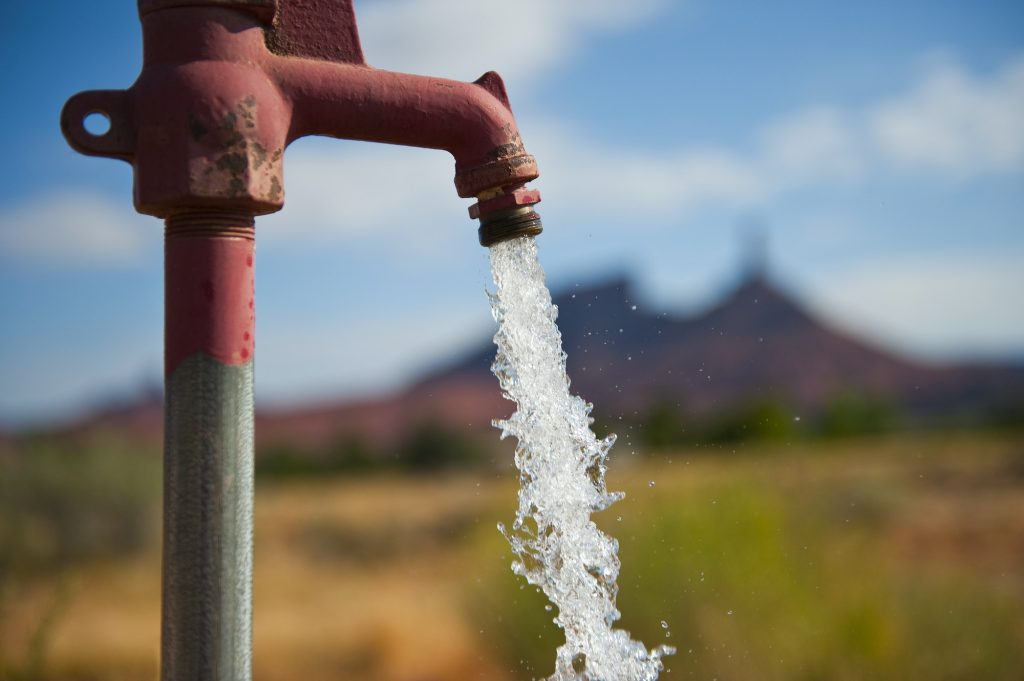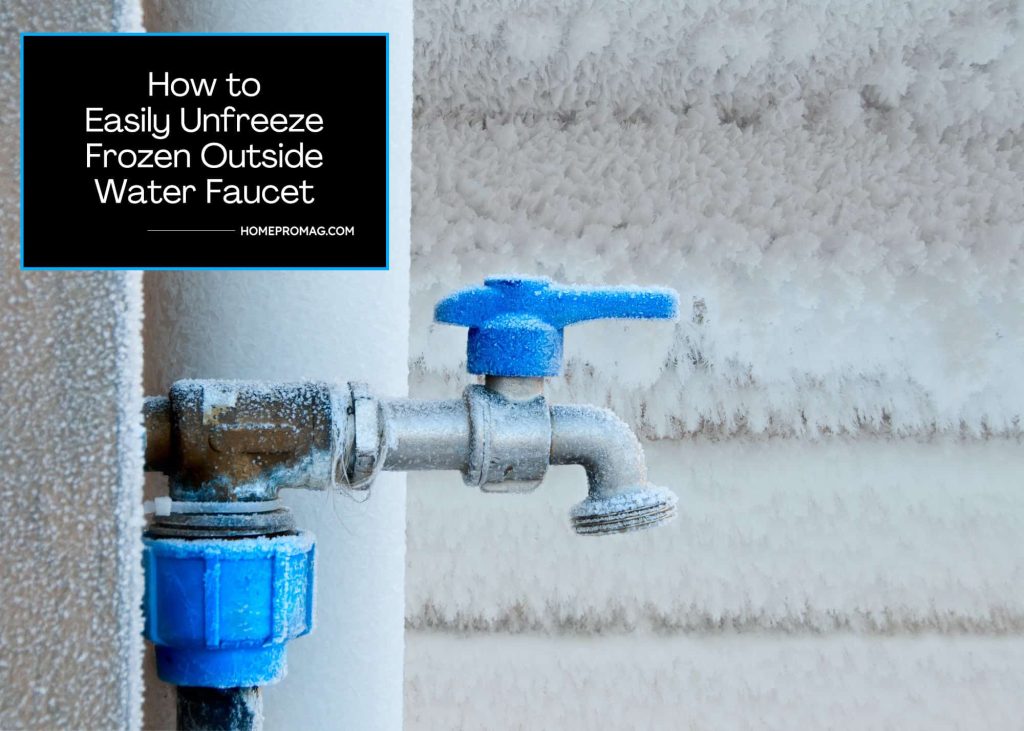Frozen water in supply pipes is a common occurrence for both commercial and residential properties in cold climates.
The water trapped in the supply lines for too long during winter is subject to freezing. In these climates, it is more common for outdoor water faucets to freeze. People barely use water outside in winter.
In warmer areas, on the other hand, frozen pipes can occur in interior spaces that are unheated such as basements and garages when left exposed to cold conditions for too long.
The best faucets for you:
Water frozen in outside water faucets has its disadvantages:
- Water blockage: When water freezes, it becomes ice. The ice gets stuck in the water supply pipes preventing the smooth flow of water through the pipes. Sometimes you may turn on the water faucet and notice only a trickle comes out, or nothing at all. This could be caused by ice stuck in the pipe.
- Damage to water pipes: the frequent expansion and contraction of water due to fluctuations in temperature are likely to weaken the pipes, especially if they are PVC pipes. It eventually leads to breakage and ultimately leakages in the plumbing system.
Ultimately, water frozen in the water line causes inconveniences and an inflated water bill. You can prevent this by inspecting your pipework every once in a while, more frequently during and after the cold season.
In case of any frozen outdoor faucets, we have put together solutions to help you easily unfreeze.
How to unfreeze frozen outdoor water faucets;
To unfreeze frozen faucets, you first have to inspect the pipes and uncover the genesis of the problem before you apply any solution.
Outdoor water faucets could freeze because of cold conditions outside the house. It can also happen due to the freezing of pipes inside the house, and the problem extends to outdoor water faucets.
We have put together solutions to tackle freezing both in the house and outside. To thaw ice in the interior;
1. Heat the house
Heating increases the temperature which will cause the ice in the pipes to melt.
2. Let warm air in
Open kitchen cabinets, garage, and basement doors areas to let in warm air to make the ice thaw. Keep the doors unlocked a few minutes a day to prevent cold air from being trapped and freezing the pipes.
3. Outside the house
Use a warm towel to unfreeze pipes. This method works best for smaller sections. Be sure of where the ice is so that you wrap that exact spot.
Soak the towel or heavy pieces of clothing in warm water. Wrap these around the area you suspect to be frozen. Let the towel stay in until it cools down. Repeat this process until you notice water flowing out.

4. Use a heating tape
Heating tapes work by insulating and providing heat to sections of the pipework that are susceptible to freezing. There are two types. One type supplies heat to the pipe section by sensory mechanism. When temperatures drop too low, it automatically switches the heat on and turns off when the air warms up. The other type of heating tape has to be plugged into a power source for it to turn on and unplugged to turn it off.
The wrapped pipe section should be easily accessible. The heating tape should also be checked for any malfunctions that might need replacing.
5. Utilize heating tools
Use a heating tool like a hair blow drier or portable electric heater to thaw ice in small areas. This method works for both indoor and outdoor water pipes.
Apply the heat until the water comes out of the faucet at normal pressure.
Instead of waiting for the problem of frozen faucets to occur, you can take measures beforehand.
How to minimize frozen water in outside water faucets
Prevent frozen spigots with these simple steps;
- It is advisable to frequently drain the supply pipes. You can do this by turning off the water at the main-supply valve or the valve that supplies water outside. Turn on the faucet and let all the water trapped inside run. Then turn it off.
- Use anti-freeze outside water faucets.
Freeze-proof faucets are similar to standard faucets, except they have a long rod connecting the compression valve to the faucet handle. This rod is inside a hose with a maximum length of 24 inches or so. It shuts off the water before it runs to the actual faucet.
Anti-freeze faucets are installed on the side of the house. The design is ideal for allowing the water connection to be situated in a house where temperatures are higher and water is less likely to freeze.
- Add insulations around the piping in uninsulated interior areas and exposed pipes in the house exterior. You can use the form of rubber fiber sleeves to provide extra insulation to exposed pipes. The insulation works by maintaining warmer water temperature and preventing the loss of it. Insulation can be in ceilings, attics, and basements.
- Keep the heat on in the house throughout the cold season. The cause of outdoor frozen water faucets sometimes originates from inside the house and extends to the outside. You can prevent this by maintaining warmer temperatures inside.
- Repair holes and cracks.
Cracks and holes around pipework let in cold air from the outside. When this air is trapped, it poses a high risk of freezing pipes. The cracks could be in floors, walls, or partitions. They can be sealed by the use of spray or form insulation.
When unfreezing, always keep the faucet turned on so that melting ice and warm air can freely flow out of the supply pipes. Keeping the spigot off puts pipes at a higher risk of bursting or cracking due to the sudden change of temperature and expansion of air.
In dealing with frozen pipes, you may encounter areas that are difficult to reach. In this case, we advise you to call your plumber to help you. However, the tips we have provided should help you solve and prevent most frozen outdoor water faucet problems.
More on outdoor plumbing:
- How to Fix Outside Water Faucet Leaking Problems
- Outdoor Water Faucet Won’t Turn Off? How to Fix It

